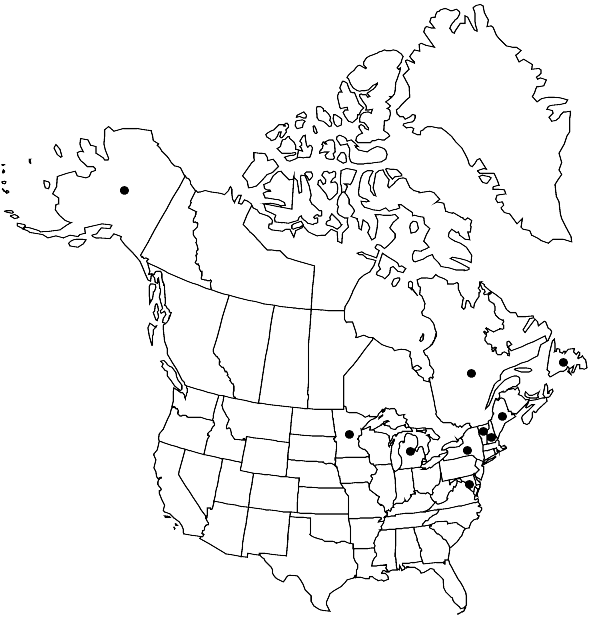Difference between revisions of "Sphagnum brevifolium"
Bot. Centralbl. 39: 340. 1889,.
FNA>Volume Importer |
imported>Volume Importer |
||
| Line 49: | Line 49: | ||
|publication year= | |publication year= | ||
|special status= | |special status= | ||
| − | |source xml=https:// | + | |source xml=https://bibilujan@bitbucket.org/aafc-mbb/fna-data-curation.git/src/bb6b7e3a7de7d3b7888a1ad48c7fd8f5c722d8d6/coarse_grained_fna_xml/V27/V27_38.xml |
|genus=Sphagnum | |genus=Sphagnum | ||
|section=Sphagnum sect. Cuspidata | |section=Sphagnum sect. Cuspidata | ||
Revision as of 22:32, 27 May 2020
Plants small and slender to moderate-sized, soft, not very compact; pale yellow, yellowish brown to brown; capitulum flat to somewhat convex, not 5-radiate to somewhat 5-radiate. Stems pale yellow to pale green, sometimes with reddish portions, superficial cortex of 2–3 layers of clearly differentiated cells. Stem leaves triangular to lingulate-triangular, apex apiculate, acute and sometimes slightly obtuse, spreading or sometimes appressed; hyaline cells nonseptate and often fibrillose at leaf apex. Branches straight to distinctly curved, leaves unranked to 5-ranked, leaves not greatly elongate at branch distal end. Branch fascicles with 2 spreading and 1–2 pendent branches. Branch stems with cortex enlarged with conspicuous retort cells, sometimes reddish at proximal end. Branch leaves ovate to ovate-lanceolate, greater than 1.2 mm, often subsecund, slightly undulate and slightly recurved when dry; margin entire; hyaline cells on convex surface with 1 pore per cell in apical end, on concave surface with round wall thinnings in the cell ends and angles; chlorophyllous cells equilateral to isosceles-triangular, well-enclosed on the concave surface. Sexual condition dioicous. Spores not seen.
Habitat: Ecology not presently understood due to past confusion with other species
Elevation: low to moderate elevations
Distribution

Nfld. and Labr. (Nfld.), Que., Alaska, Maine, Md., Mich., Minn., N.H., N.Y., Vt., Europe.
Discussion
Details of the distribution of Sphagnum brevifolium are unclear because of confusion with S. fallax and S. isoviitae. This seems to be a species of poor to medium fens, where it occurs in depressions and floating mats; it does not appear to form extensive fast-growing mats as do S. fallax, S. isoviitae, and S. pacificum. Sphagnum brevifolium is one of five species in the S. recurvum complex with apiculate stem leaves. On the Pacific coast it seemingly co-occurs only with S. pacificum, from which it differs in having branch leaves less sharply recurved and more strongly 5-ranked. In eastern North America it is quite uncommon but can occur with both S. fallax and S. isoviitae of S. recurvum, in the broad sense. Sphagnum fallax has more sharply recurved branch leaves. Sphagnum splendens has a distinct shiny look. The much more common S. isoviitae has a distinctly flatter capitulum, narrower branch leaves and wider stem leaves. In fact, the relatively broad branch leaves of S. brevifolium sometimes can give it the appearance of a slender S. pulchrum, but the latter has much more strongly 5-ranked branch leaves and lacks paired pendent branch buds. See also discussion under 22. S. angustifolium.
Selected References
None.